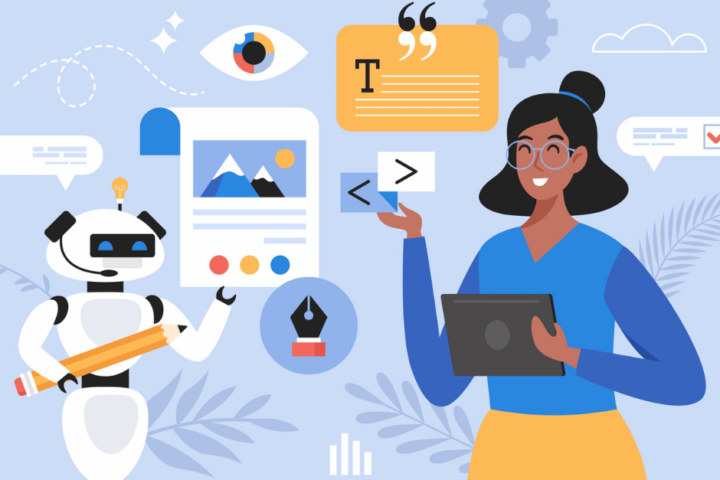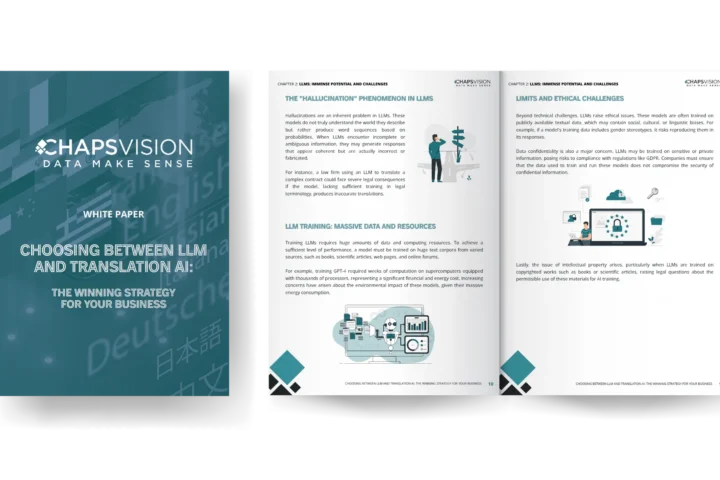Language Translation Benefits For Education
The significance of education in any child’s life is massive and should never be underestimated. Students benefit tremendously from the numerous doors and opportunities that can be opened for them through education. There is a vast amount of knowledge out there waiting to be discovered, and the subjects that can take them to the heights include far too many to list here.
In essence, everyone should have access to a good education, which takes us to the topic of how translation might help the education of children in the United States who have a limited ability to understand and speak English.
Students who come from families where English is their native language do not suffer the same barriers in English speaking countries. Let’s investigate the importance of language translation in the education of limited English proficient (LEP) children in the United States, as well as the ways in which both the kids and their families can benefit from it.
Table Of Contents:
Language Translation Pays Dividends
Critical Documents That Can Be Translated Into Another Language (While Retaining Format)
Welcoming New Students Into The Fold
Educational Goodwill Starts Here
Getting Parents Involved in the Education of Their Children
Increased Productivity during Educational Get-Togethers
Access to Multiple Languages Promotes Interaction
It’s All About the Students’ Success
Staying Compliant With Federal Law
Machine Translation For Education
However, even with a feature-rich MT platform, machine translation post-editing (MTPE) is still a necessity to achieve the best translation quality. You can think of MTPE as a hybrid approach between machine and human translation that offers the best of both worlds for translation projects. Studies have shown that professional translators exert less energy when editing machine-translated content than when starting a translation from scratch, which leads to numerous advantages when compared to raw machine translation.
In this article, we’ll give you a complete overview of why MTPE is so important for high quality translations and how you can implement it into your translation projects.
Language Translation Pays Dividends
Children and their families benefit tremendously from having materials translated into their native language. According to recent statistics, there are nearly 62 million pupils that are limited English proficient in the United States. Students have a better chance of truly achieving academic success when they have access to education translation services, or even better, education translation software.
Often language service companies claim to guide families through the process of figuring out how to navigate their children’s educational experiences and can help them comprehend the academic requirements and opportunities. What is often left out is the incredibly large expenses that these translation services tend to charge. Meanwhile, for fairly minor updates and notifications for LEP families, these services are all but useless. The over $100 per hour rates charged by some of these services simply do not fit with the trend towards shrinking education budgets, and the lack of real-time translation abilities create major communication bottlenecks. Some of the advantages that can be gained via the use of education translation software are as follows:
- Clarifying a student’s academic progression and providing feedback on that progress, often within minutes instead of days
- Providing kids with improved educational opportunities and experiences in real time
- Enhancing the relationship between students and teachers and facilitating more fruitful educational gatherings that ensure understanding.
Critical Documents That Can Be Translated Into Another Language
(While Retaining Format)
Schools are required by the Office for Civil Rights of the United States Department of Education to communicate information to parents who have a limited proficiency in the English language in a language that they can understand. This information may pertain to programs, services, or activities that are brought to the attention of parents. This information could be presented in a variety of formats, including the following:
- Enrollment and registration documentation
- Course descriptions
- Class schedules and timetables
- Brochures
- Legal documents
- Language acquisition programs
- Discussions or gatherings pertaining to special education
- Parent-Teacher conferences
- Guides for parents and guardians
- Reports on the academic progress of students
- Acceptance letters
- General communications via letters or emails
- Report cards
- After hours school activities
The prospects for learning and growth that a student has can be jeopardized if schools do not translate papers correctly, such as the ones that have been stated above.
Welcoming New Students Into The Fold
Having native or expert language speakers available to perform MTPE is an ideal situation all companies should strive for. Localization efforts have so many advantages to an organization’s internal documentation, services, or products that the organization should invest in them. Native or expert language speakers are the individuals who can carry out those post editing efforts most effectively.
If you have these individuals on your internal post editing team, delegating MTPE responsibilities to those team members will facilitate the easiest transition. They know your brand’s style guide, are familiar with the organization, and can ensure consistent messaging.
Otherwise, you can hire freelance experts with your machine translation engine to conduct your MTPE processes. Be sure to provide them with a detailed translation style guide for your corporation to create the best results.
Educational Goodwill Starts Here
The gesture that educators make in order to interact with children and parents whose first language is not English is one that is very much appreciated by the recipient. It helps develop high quality relationships between the teacher and the student, encouraging the kids to build their identities as bilingual speakers while at the same time helping their families.
When schools and individual instructors make use of translation software, they do more than just make communication more obvious; they also bridge the cultural differences that prevent communities from developing stronger bonds to one another. Students can take what they discover at school and from their teachers back to their homes, where they can share it with members of their families who do not speak English, which in turn helps them improve their language skills.
In the event of a parent-teacher conference, educators are also able to speak with their students and the parents of those students thanks to SYSTRAN’s new speech to text feature. There is no need to make an appointment in advance for an expensive telephone interpretation service because using SYSTRAN means there is access to translation 24 hours per day, seven days per week.
Getting Parents Involved in the Education of Their Children
At home, approximately twenty percent of the population of the United States communicates in a language other than English (according to the American Academy of Arts and Science). Many parents who are bringing up their children with two languages have expressed their frustration at not being able to assist their children with their schoolwork. For parents who do not understand English, the language barrier can feel like a significant obstacle when it comes to being involved in their children’s education and, by extension, their children’s future.
The use of translation software in educational settings creates numerous opportunities for assisting parents in surmounting these obstacles. To begin, kids have the opportunity to play a more active role in home study. They will be able to provide academic support for their children and have an understanding of the projects that their children are working on.
Another way that translation can assist parents in being more involved in their children’s educational experiences is by enabling them to communicate with their children’s teachers during conferences, also known as parent-teacher conferences. Because this is such a significant component of being a parent, many parents who do not understand English are forced to miss out on these critical meetings. Not so with speech to text and a well configured translation system.
Then there are other, more practical ways in which translation software can be helpful, such as in advising families of any school closings or probable delays. Another example of this would be when communicating with international students organizations. Keeping parents informed and up to speed on the latest information can also be very beneficial in expressing the requirements of the curriculum.
Research has repeatedly demonstrated to us the importance of parents being actively involved in their children’s educational experiences. Students have a considerably greater chance of being successful in their scholastic endeavors if their parents are involved in a meaningful way. While the availability of translators for parents or guardians who do not speak English tends to limit their use, machine translation software like SYSTRAN affords them the opportunity to participate in an aspect of their children’s life that is critically important.
Increased Productivity during Educational Get-Togethers
We previously discussed the value of parent-teacher conferences, emphasizing their significance for all parties involved—students, educators, and parents. Imagine now if schools start calling for larger gatherings that incorporate an entire year group, multiple classes, or even the entire student body.
In general, these are planned in order to have a conversation about significant alterations, forthcoming events, or topics that have a direct impact on the children. Imagine that you recently attended a meeting at your school. What was the topic of discussion? It’s possible that we’re talking about certain ground rules for conduct, or maybe some health concerns. However, there is a sizeable population of parents who are completely incapable of comprehending anything that the school’s administration are saying. It can be a terrible problem for more parents than you would expect.
These sessions are a source of aggravation for people who are unable to understand what is being said because they are aware that they are lacking essential information. It is challenging for the staff members who are leading the sessions since they are aware that some of the parents are unable to comprehend, and they are attempting to make up for this factor.
This, in turn, can cause problems for parents who do understand, and these parents end up feeling a great deal of exasperation each time the meetings go over time because there is a lot of repetition, and sometimes the main point of the meeting can be missed entirely. In addition, the meetings tend to run longer than they should.
It is possible to feel an incredible amount of strain if you are the person who is in charge of planning these meetings or delivering the presentations during them. Even if you have done all of the planning and preparation in the world and are an absolute authority on the subject matter that you are presenting, it may be depressing and deflating when things go wrong due to factors that are beyond your control like language comprehension.
The fact of the matter is that none of these educational gatherings can be productive or efficient unless translation (either machine translation, or far more expensively, human translation) is present to facilitate communication.
Access to Multiple Languages Promotes Interaction
When schools take advantage of AI enabled machine translation software, document translation and on-site interpretation become far more exacting and effective. This also build closer links with the parents of their pupils and overcomes cultural barriers that exist within the community.
The fact that the school cares enough to want every family to be involved is communicated to the parents in a positive way by issuing communications in the parents’ native language. If parents believe their time and input are valued by the school, they are more likely to volunteer for events, activities, and programs sponsored by the institution.
In addition, parents might become more active in the academic life of their children if they have a better understanding of what goes on at school and the things that they can do to encourage and support their kids’ efforts.
Language access through machine translation software is another tool that can assist schools in their efforts to become more of a bedrock in the community. If the school chooses to rely on expensive, slow human translation services, this can great bottlenecks that can be detrimental to the school’s reputation. A translated school document with its format retained can show an institution’s professionalism and expertise in several languages if it is done correctly. SYSTRAN performs this translation for schools across North America daily, and takes only minutes, as opposed to days or weeks.
It’s All About the Students’ Success
Critical answers to the pupils’ questions are not simply blankly relayed by teachers. They show children how to find solutions to problems. Today’s students are being taught significant ideas that will serve them well throughout their entire lives, and this is the responsibility of the teachers to provide those lessons well.
If a student doesn’t grasp a particular idea, it follows that they won’t be able to put that understanding into practice in the future. They have not retained any of the information that has been presented to them. Pupils will have a better chance of being successful in the future if they possess life skills, and it is crucial for students to have a solid knowledge of the material they are learning.
Misunderstandings have the potential to swiftly become a significant obstacle for any and all students who are monolingual in a language other than English (LEP) or who speak English as a second language. It is of the utmost importance to make sure that every child has access to the translation resources that they require in order to put them up for success both now and in the future.
It is recommended that students undergo language conversion while it is still happening in real time. This is because both the pupils and the teacher need to be capable of simultaneously translating languages in both directions. Both the students and the teachers are required to have an immediate comprehension of the material that is being presented in class, and then the teachers must be able to comprehend the inquiries that are being posed by the pupils.
Staying Compliant With Federal Law
While many people are aware of the Civil Rights Act of 1964, specific details can often be lost as the years pass. Yet, the statute is extremely straightforward and states:
“No person in the United States shall, on the ground of race, color, or national origin, be excluded from participation in, be denied the benefits of, or be subjected to discrimination under any program or activity receiving Federal financial assistance,” the law states. “No person in the United States shall be subjected to discrimination under any program or activity receiving Federal financial assistance.” 1964’s Civil Rights Act is referred to here.
Improving Access to Services for Persons with Limited English Proficiency, also known as Executive Order number 13166, became part of the law when it was passed by the government in August of the year 2000. This law focuses on translation and mandates that government agencies review the services that are currently being offered to determine whether or not there should be any changes.
After that, they will have to determine whether or not the need still exists. If there is a need for the services in question, government agencies will devise and implement a system to meet that demand.
Providing Support and Resources for Educators and Teachers
According to the National Education Center for Statistics, 10.1 percent of children in the United States, or 5 million pupils, are recognized as English Language Learners (ELLs), which stands English Language Learners. This can provide various challenges for educators.
The National Education Center for Statistics reports that the typical number of students enrolled in a class in US public schools is 25. If we take this information into account, we can deduce that there are two students in each and every class who do not have an adequate command of the English language. This presents a significant obstacle for the instructors.
In general, classroom teachers receive very little training on how to appropriately accommodate students who are still developing their English language skills inside their own classes. It is not always easy to meet the requirements of students who are native English speakers while also addressing the needs of students who are learning English as a second language.
Both in terms of their native language and the extent to which they can communicate in English, each of them may have a unique perspective.
Improved Relations Between Students and Teachers
It is imperative that students who do not speak the language as their native tongue have access to a translation resource such as SYSTRAN MT in order to have the greatest possible interaction with their instructor or tutor.
Both the teacher and the student should, after a very short period, be able to ignore the fact that speech to text software is being used. At first, it may take some getting used to, but after a while, it becomes routine and a common, helpful practice.
Machine Translation For Education
With over 50 years of history in the MT industry and a wide array of impressive features, SYSTRAN’s neural machine translation is unlike any other, and is incredibly cost effective. You can experience this powerful post editing friendly machine translation solution for yourself. Test SYSTRAN’s MT engine today and find out more about how we can help you create better translations.
To learn more about specific translation terminology, check out SYSTRAN’s resource on every term you need to know.






